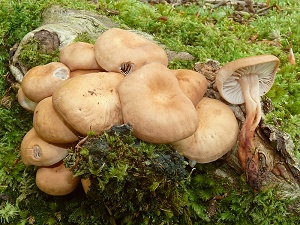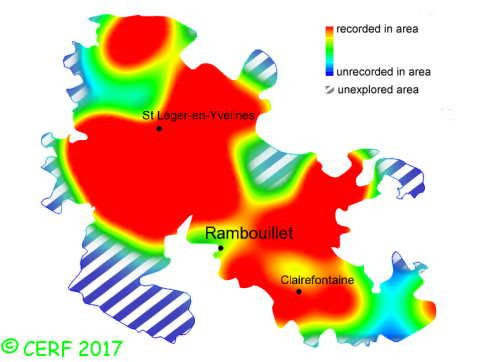| Gymnopus fusipes (Bull.:Fr.) Gray |
|
|
|
|
|
|
The cap is red-brown. The cap surface is smooth, not viscid nor sticky. The stem is tapering towards both ends and grooved, tough, rooting, often twisted, darker red towards base, without ring. The flesh is white, unchanging; its taste is mild; the odour is pleasant; its texture is fibrous. The gills are white then purple brown, adnate, distant (nb of gills per 90° ~ 16 ). The spore print is white. This species is parasitic or saprophytic. It grows on wood (dead or not), in tufts, in broad-leaved woods, with oak, beech. The fruiting period takes place from April to December.
Chemical tests : none. Distinctive features : Brown colour; stem thick, twisted, irregular and deeply rooting, grooved, typically tapering towards both ends with a rooting base fusing with others; very thick gills, distant; hygrophanous cap; grows at tree bases or on stumps, in small tufts Gymnopus fusipes is very frequent and very widely present in the forest of Rambouillet, and is frequent, more generally speaking . | ||
|
page updated on 14/01/18

